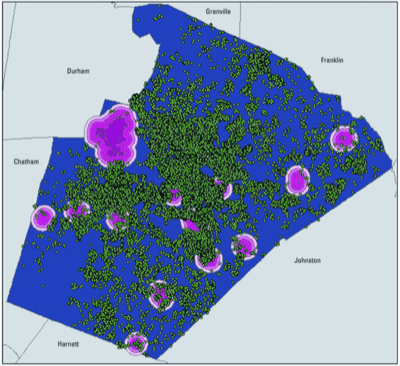In what is sure to provide more fodder for the ongoing debate over the future of leaded avgas, the Children’s Environmental Health Initiative, at Duke University’s Nicholas School of the Environment in Durham, N.C., recently released a study “A Geospatial Analysis of the Effects of Aviation Gasoline on Childhood Blood Lead Levels”. In this research, authored by Marie Lynn Miranda, Rebecca Anthopolos and Douglas Hastings, the blood levels in children living near airports in six of North Carolina’s counties were investigated.
 The report concludes with the following: “Our analysis indicates that living within 1,000 meters of an airport where avgas is used may have a significant effect on blood lead levels in children. Our results further suggest that the impacts of avgas are highest among those children living closest to the airport. This study adds to the literature examining whether leaded avgas poses risks to children’s health and speaks directly to the ongoing policy debate regarding the regulation of leaded avgas.”
The report concludes with the following: “Our analysis indicates that living within 1,000 meters of an airport where avgas is used may have a significant effect on blood lead levels in children. Our results further suggest that the impacts of avgas are highest among those children living closest to the airport. This study adds to the literature examining whether leaded avgas poses risks to children’s health and speaks directly to the ongoing policy debate regarding the regulation of leaded avgas.”
It will be interesting to see how both sides of the avgas debate interpret these findings.
The GAfuels Blog is written by two private pilots concerned about the future availability of fuels for piston-engine aircraft: Dean Billing, Sisters, Ore., a pilot, homebuilder and expert on autogas and ethanol, and Kent Misegades, Cary, N.C., an aerospace engineer, aviation sales rep for U-Fuel, and president of EAA1114.
People who read this article also read articles on airparks, airshow, airshows, avgas, aviation fuel, aviation news, aircraft owner, avionics, buy a plane, FAA, fly-in, flying, general aviation, learn to fly, pilots, Light-Sport Aircraft, LSA, and Sport Pilot.

More proof that figures don’t lie, but liars figure. BTW, how many kids live within 1000 meters of these airports?Â
I’m quite sure reputable scientists or engineers could disprove these findings by showing how mant PPM of lead are in the air, and how many would be inhaled by someone. Why did the study not include adults?
Marcel – I wondered when someone would mention this. Note the image above is in the county where I live, Wake, in central NC. The large airport on the upper left is RDU, which has mostly airline operations.  There are quite a few piston planes based here, and both FBOs offer AVgas. All three FBOs at ORD offer Avgas, too.  It would be interesting to know how many gallons of Avgas are sold at RDU or ORD, and compare this to the major GA airports in California that are the defendants in the CEH lawsuit.
The study states: “a study at Chicago (IL) O’Hare airport found that air lead levels were significantly higher downwind from the airport than upwind (Illinois Environmental Protection Agency 2002).”Â
This is interesting as there is basically no avgas used at ORD Airport. Â 99.9% is jet traffic…
The 1000 miles in the conclusion is a typo from the blog posting, not in the original study. It should have read meters. We should have the correction shortly. Blame fancy spell checkers. Zaitcev – I suggest you contact the authors at Duke and ask if this is how they worked, manufactured results. Duke has quite a reputation at stake if this is the case.
It’s been fixed to meters. Sorry about that!
Coincidentially there was a forum thread at PoA about how these studies are manufactured. They send students in, who measure and find nothing. Then they make students measure again and again until the right answer is obtained.